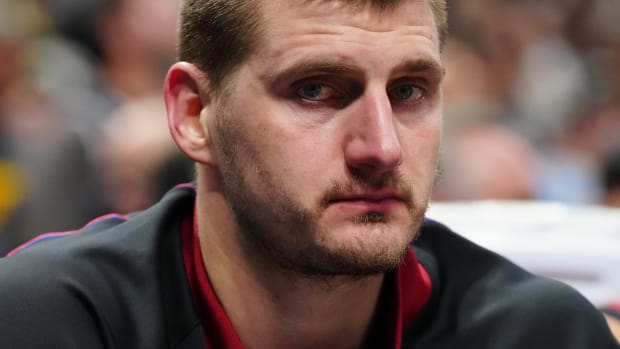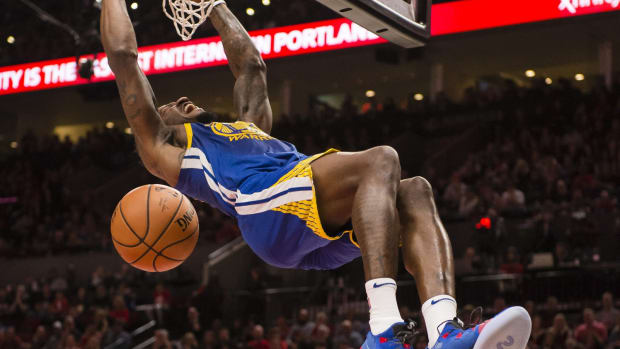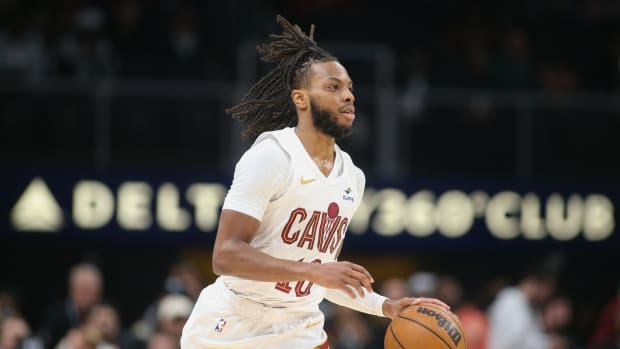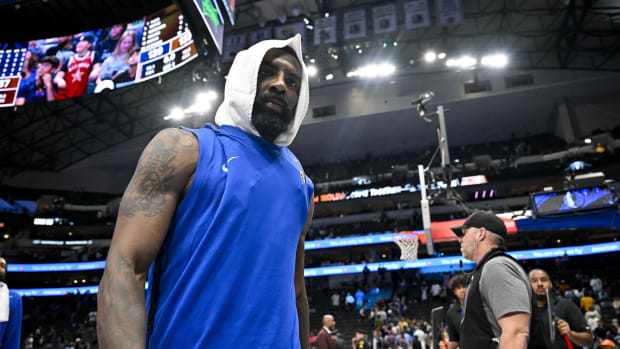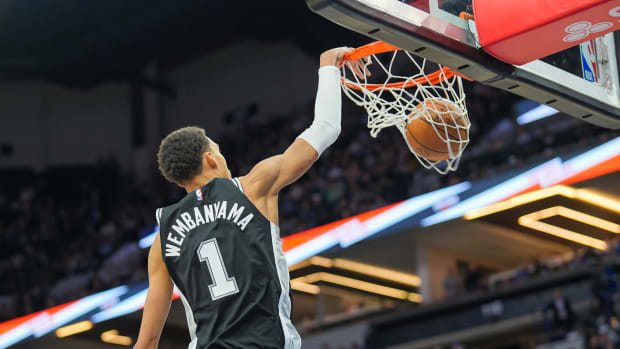Stanford Study Breaks Down Impact of ACL Injuries on NBA Players
Whether it's a high school, college or professional athlete, too many basketball players have heard that devastating news after they hear that pop in the knee: "You've torn your ACL. Your season could be over."
Stanford researchers have been studying ACL injuries in NBA players and how it can affect not only the players themselves, but the season as a whole. Researchers found the more a player drives to the basket, the more likely they are to tear their ACL located in the knee.
"In the past few seasons of the NBA, ACL tears have been changing the competitive landscape of the game," Stanford researcher Kevin A. Thomas said.
Knee injuries make up 13.8% of all reportable NBA injuries and cause the most amount of time to recover averaging out to 9.8 months. However, the return to sport rate for NBA players suffering an ACL injury is between 84 and 89%, researchers said.
Thomas said the reason the percentage isn't an exact number is because various researchers have a different definition of 'return to sport' and may be using different data sets when analyzing player injuries and returns.
Another significant finding that will excite injured players everywhere is that those who returned to the NBA after ACL reconstruction showed no decline in points, minutes played or alteration in style of play.
Still, it's the least ideal injury.
To paint the full mural here, there were six players who tore their ACL's in the 2020-21 season, five of the tears from players on teams that eventually made the playoffs.
Los Angelas Clippers guard Kawhi Leonard, Denver Nuggets point guard Jamal Murray, Phoenix Suns forward Dario Saric, former Brooklyn Nets player and current Washington Wizards guard Spencer Dinwiddie, Washington Wizards center Thomas Bryant and Orlando Magic guard Markelle Fultz are among those players.
Thomas noted both Saric and Leonard tore their ACLs in the final month of the season after the NBA published an injury rate article, meaning it's possible other players could have torn their ACLs during this time too.
What is the job of an ACL, and why is it so detrimental to an athletic performance?
ACL stands for anterior cruciate ligament. It's a band of tissue that connects the thigh bone to the shin bone and is essential for knee stability. The ACL is about 1.33 cm. in length and 0.43 cm. in width.
Yes, it's tiny, but a tear can mean a long recovery and affects 2.7% of NBA players throughout their career, according to the study.
Thomas and a team of researchers conducted a case control study and went to work studying injury reports, press releases and information through online sources. The researchers discovered 97 NBA players had torn their ACLs since 1980.
From the 97-player pool, the researchers dwindled the group down to study 50, excluding players who played in another league or who had previous ACL tears.
"We gathered performance-related information," Thomas said. "Fifty different metrics for every player for every season since 1980."
The 50 metrics included common season-level performance statistics such as minutes played, player efficiency rating, field goal scores, field goal attempts, assists steals, blocks, drive tendency, etc.
The team of researchers then developed an algorithm to match ACL-injured players with two other NBA players similar in age and playing style who had not torn their ACLs.
For example, the algorithm matched Ron Harper — who was the Los Angeles Clippers' leading scorer before he tore his ACL in 1990 — with NBA players Paul Pressey and Scottie Pippin.
This way, researchers could analyze those 50 different metrics across the matched players and determine if the ACL injuries led to an alternate style of play or a dip in positive stats after return to sport.
Former Indiana Pacers forward Al Harrington tore his ACL in the 2001-02 season. The study's algorithm matched his 2000-01 season, his last season before injury struck, with Tony Battie's 1998-99 season and Troy Murphy's 2002-03 season.
Harrington out-performed his two matched comparison players in the latter portion of their careers in terms of total minutes played and points scored.
"The players that were able to make it back to the NBA after their ACL tear came back at a similar level of performance to what you'd expect from a player who never had an ACL injury in the first place," Thomas said.
"That was surprising, but super encouraging for us and players everywhere."
It was determined that players with high career driving tendencies experienced ACL tears at a rate of 5.2% compared to the guys with lower drive tendencies, who tore their ACLs at a 3.8% rate.
Thomas said when ACL injured players returned to the NBA, their style of play didn't alternate much. One might wonder if a former injured player might play it safe on the arc, but Thomas suggested it's difficult to change a player's individual style to prevent injury after so many seasons of developing a style of play.
"The modern NBA is increasingly relying on three-point shooting," Thomas said. "Thinking that three-point shooting might decrease players' risk of ACL tears, we also looked at whether players' frequency of three-point attempts was associated with their ACL injury risk. We didn't find that relationship though."
That little ligament can sure cause a great deal of pain and distress, but thanks to the Stanford study, the researchers concluded the pain isn't permanent.
The research was published Nov. 5 in the Orthopaedic Journal of Sports
Medicine.
Researchers
- Kevin A. Thomas, BSE; Blake J. Shultz, MD; Mark Cinque, MD; Joshua D. Harris, MD; William J. Maloney, MD; Geoffrey D. Adams ,MD
- Investigation performed at Stanford University, Redwood City, Calif. USA.
"The Stanford University School of Medicine consistently ranks among the nation’s top medical schools, integrating research, medical education, patient care and community service."
For more news about the school, please visit http://med.stanford.edu/school.html.
The medical school is part of Stanford Medicine, which includes Stanford Health Care and Stanford Children’s Health. For information about all three, please visit http://med.stanford.edu."
